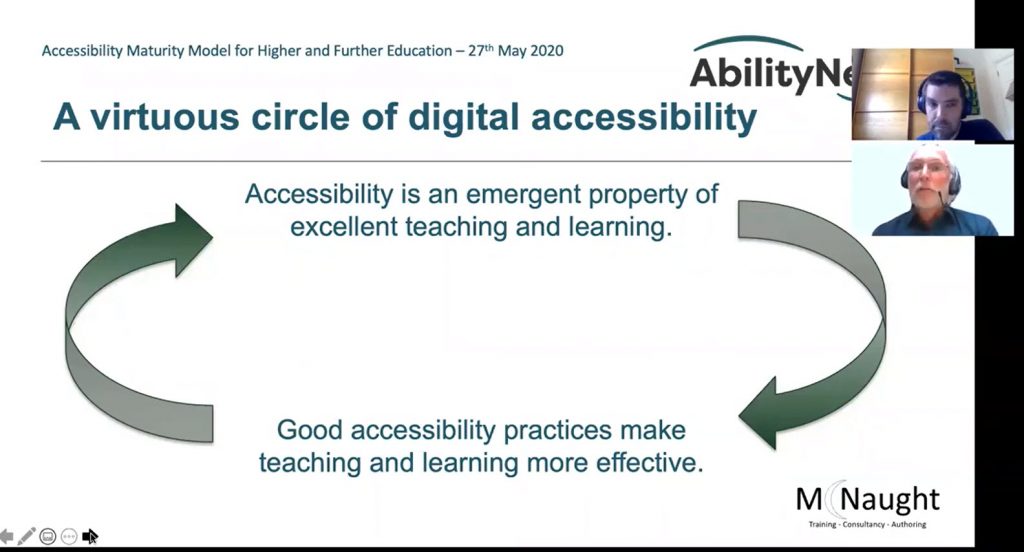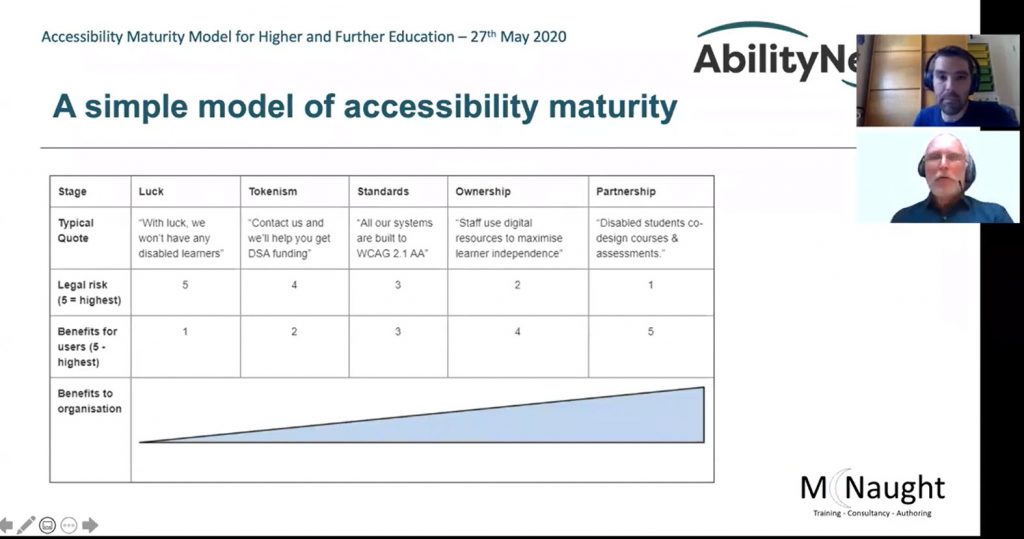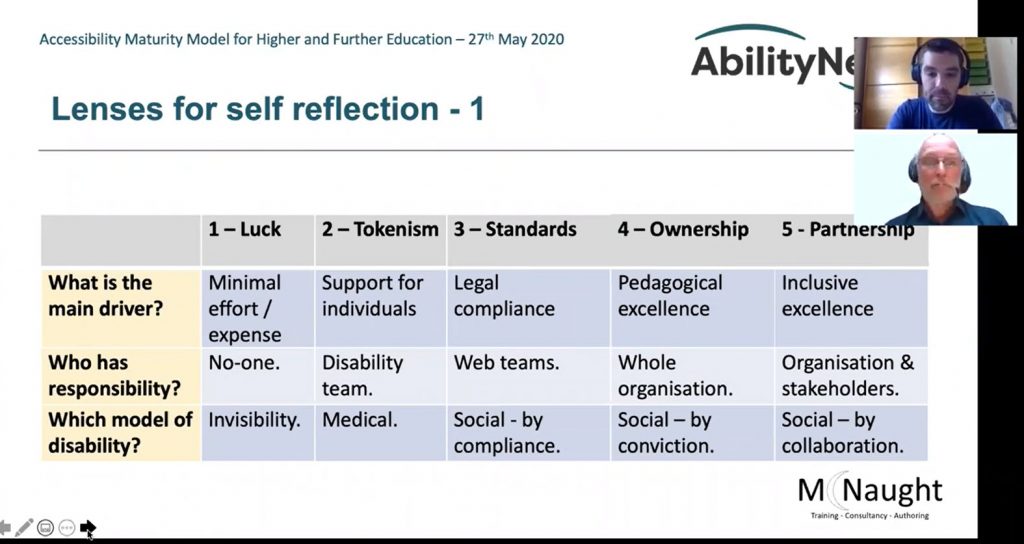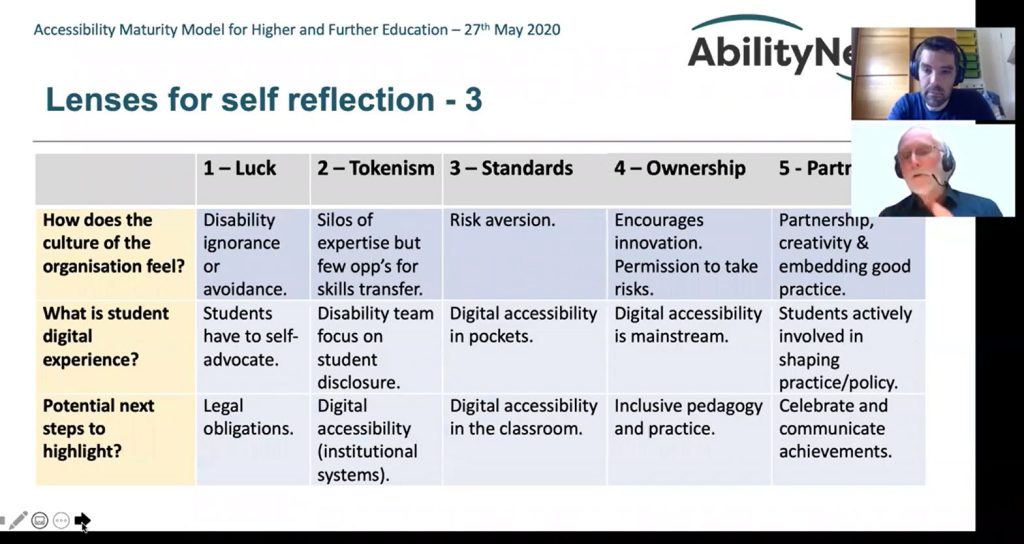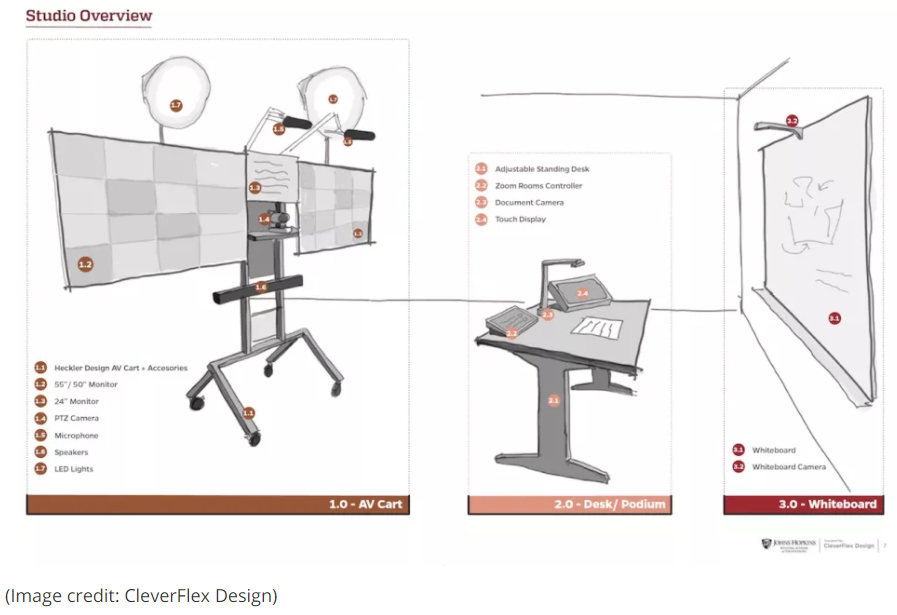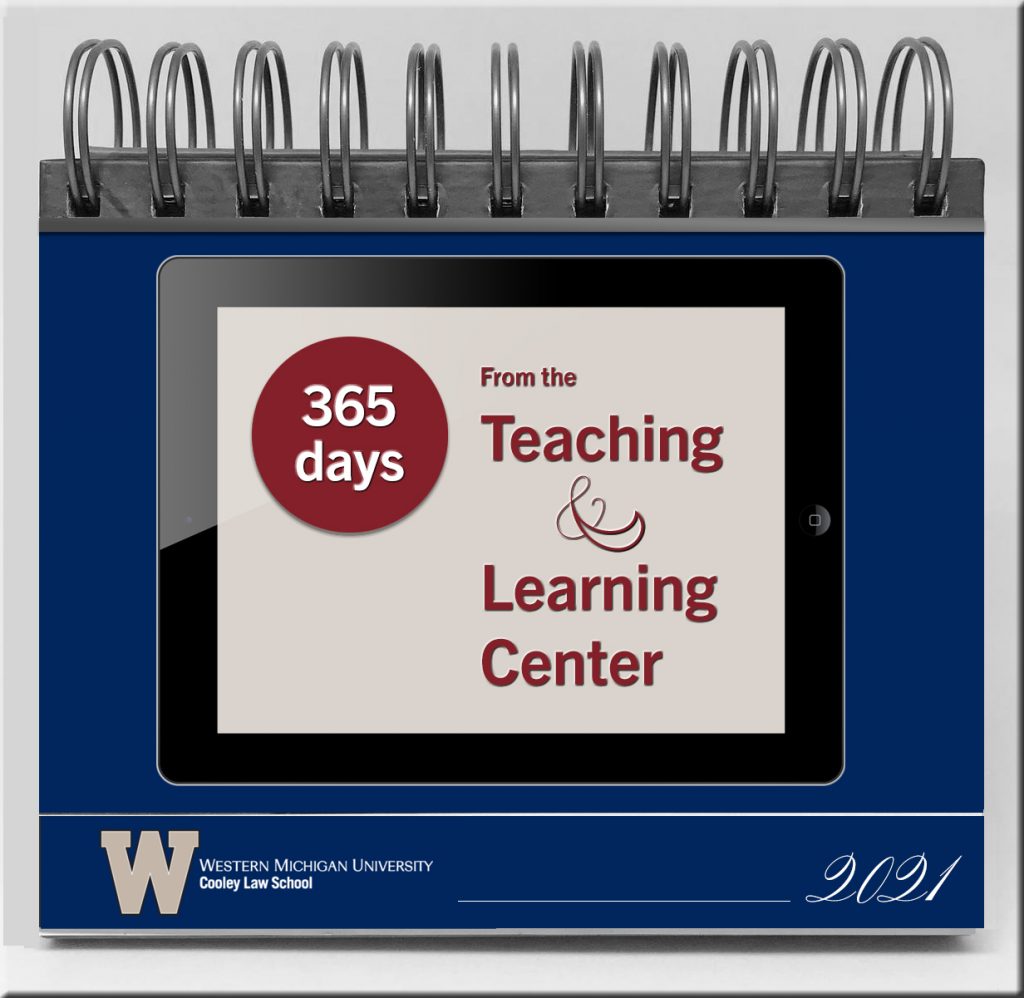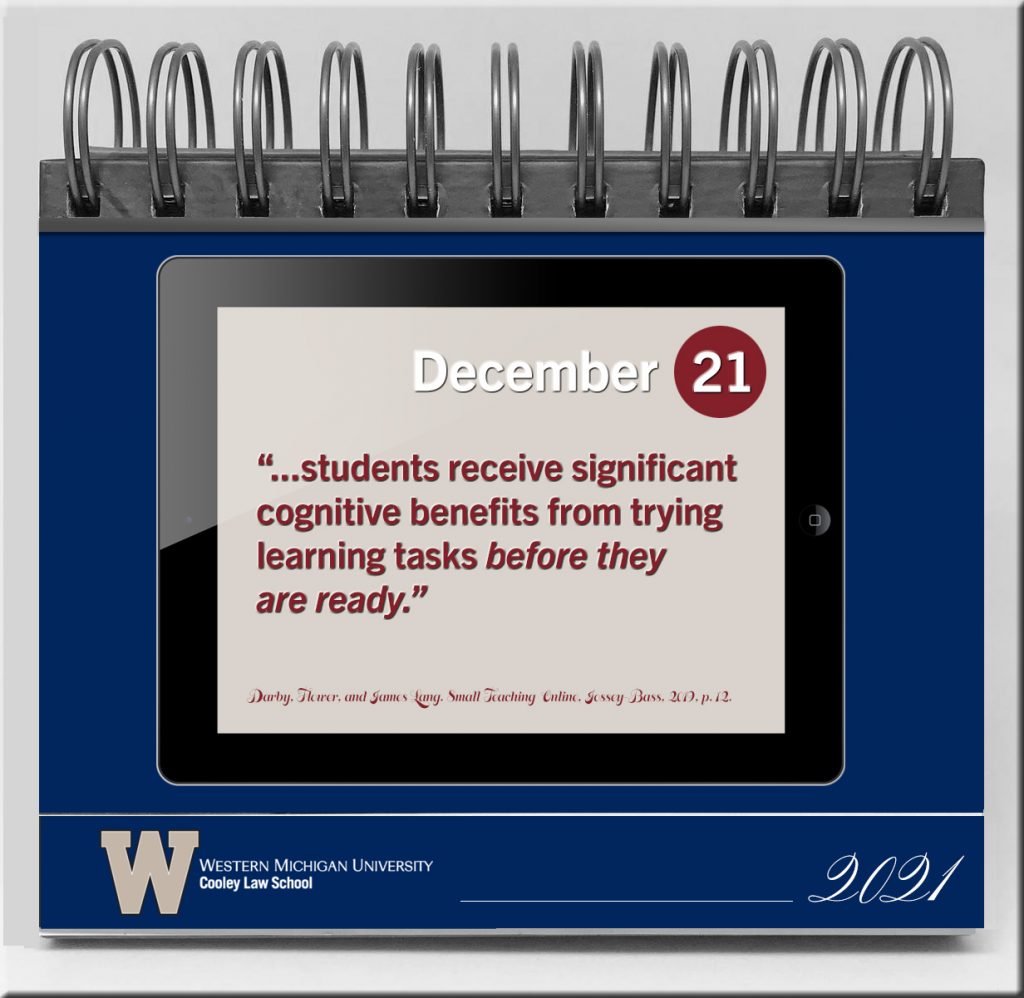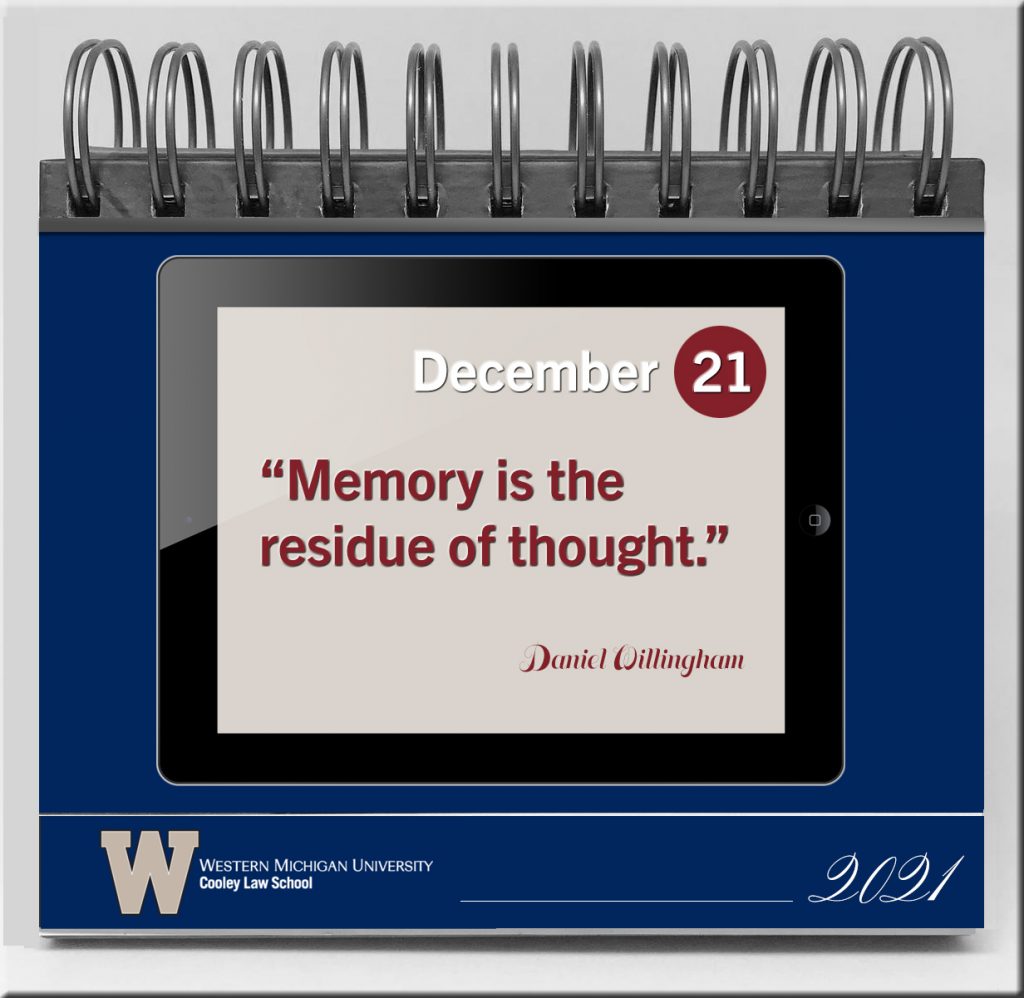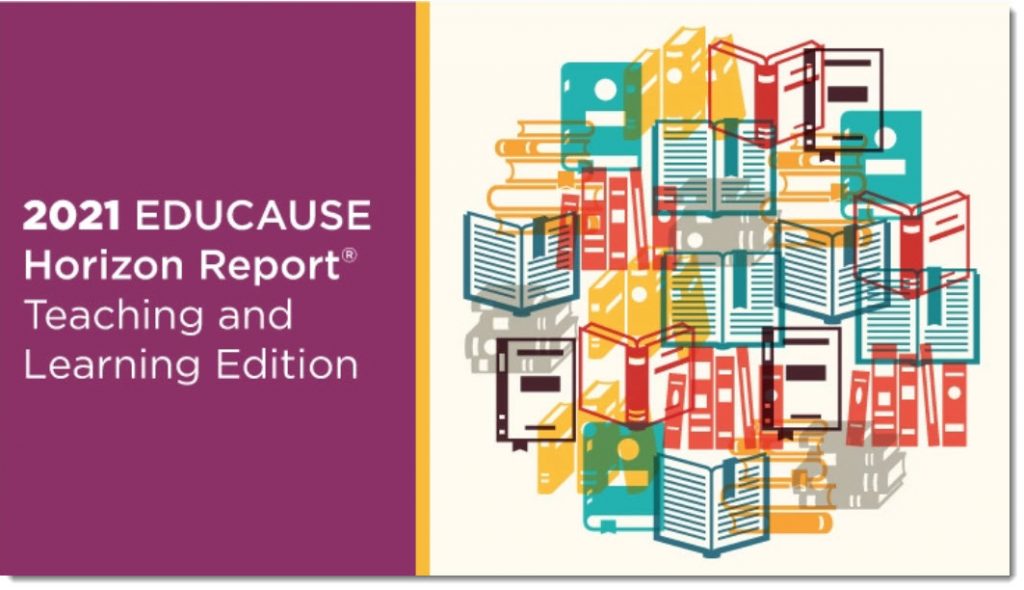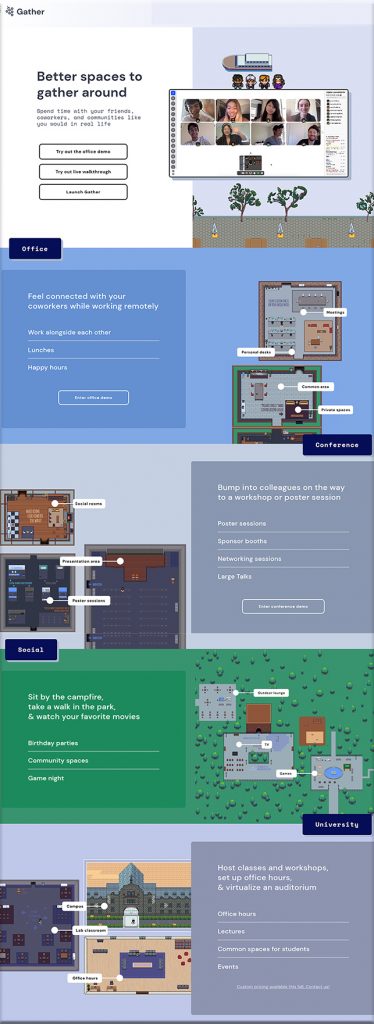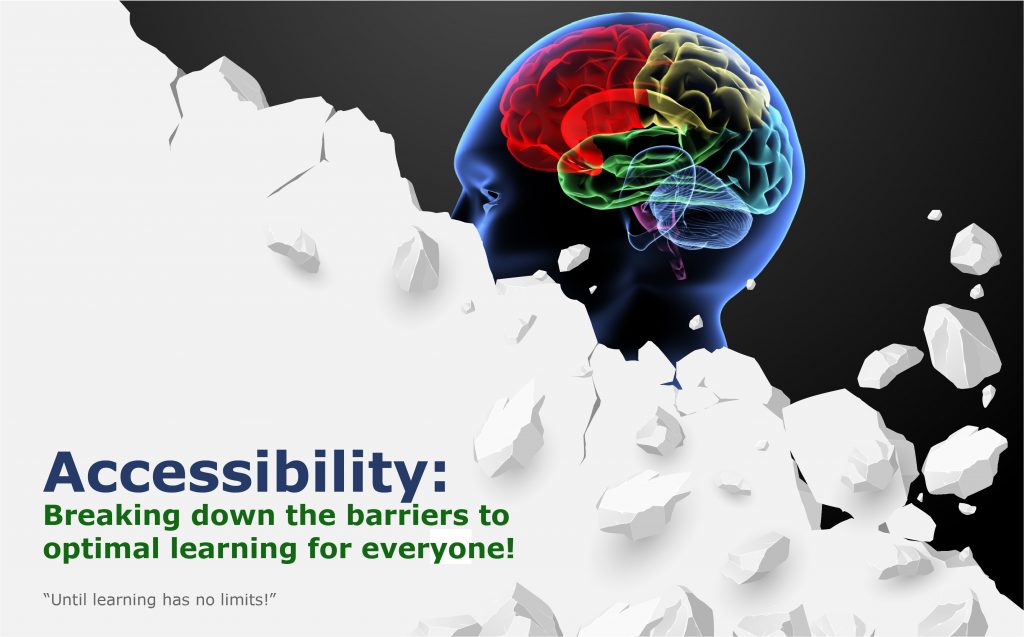Part I: How do I measure accessibility maturity and compliance? — from abilitynet.org.uk by Alistair McNaught
When you ask adults to recall their most memorable and enjoyable learning experiences it nearly always comes back to relationships – a fun teacher, an inspiring lecturer, a lively community. Such human interactions neatly illustrate the difference between maturity and compliance.
A “mature relationship” sounds a lot more attractive than a “compliant” one. Yet many institutions are offering compliance to disabled learners rather than mature relationships.
The lenses we use are:
- Main driver – Where is energy being expended and what is measured as success?
- Responsibility – Who are the actors. Do they have sufficient authority?
- Model of disability – Is the perception “users with issues” or “systems and content with barriers”?
- Focus of effort – Is accessibility a “task and finish” project or a long-term quality improvement?
- Skills and expertise – What is the focus of training? Who gets it? Is it considered important?
- Digital accessibility in policies – Digital accessibility is a vital equality issue. Is it visible in policies?
- Culture – Is the focus on minimising risk? Or maximising user experience? Does accessibility straitjacket online learning? Or encourage innovation and experimentation?
- User’s digital experience – How consistent is the user experience? How well designed?
Part II: Accessibility maturity in education — from abilitynet.org.uk by Alistair McNaught
Excerpt:
In this article we explore the “Drivers” lens. What is driving your change? The need to be compliant and tick off the boxes? Or a desire to be digitally inclusive, ensuring every student can be as confident, independent and productive as possible?
Part III: Broaden accessibility responsibility beyond learning teams — from abilitynet.org.uk by Alistair McNaught
Excerpt:
At the upper levels of maturity, the confidence and competence of a wide body of staff will mean the organisation moves beyond micromanagement of accessibility. Accessibility may be mandatory but a wide range of templates will be available. Even better, many staff will have enough understanding to create their own accessible content and courses without needing a template. At this level, the following lines of evidence will be available:
- A senior sponsor will be responsible for digital accessibility across the organisation.
- Any cross-organisation steering group will be hosted by senior staff, meeting regularly and evidencing positive outcomes.
- Digital accessibility will be a standing item in self-assessment reviews or quality assurance processes, and appropriate training will be in place to make this meaningful (see the later lens in the final blog coming soon in the series, on skills and expertise!).
- Students will be actively involved in accessibility developments.
Part IV: Coming soon.
Learn about the Accessibility Maturity Model for Higher and Further Education that AbilityNet and McNaught Consultancy have developed based on Alistair McNaught’s existing model. See here and here.
Some example snapshots:









